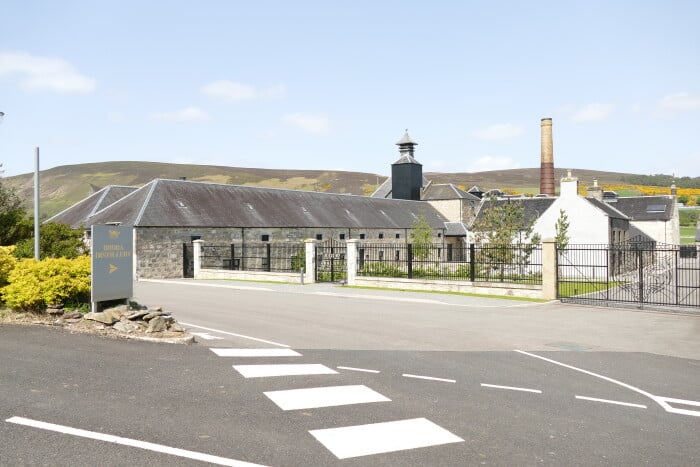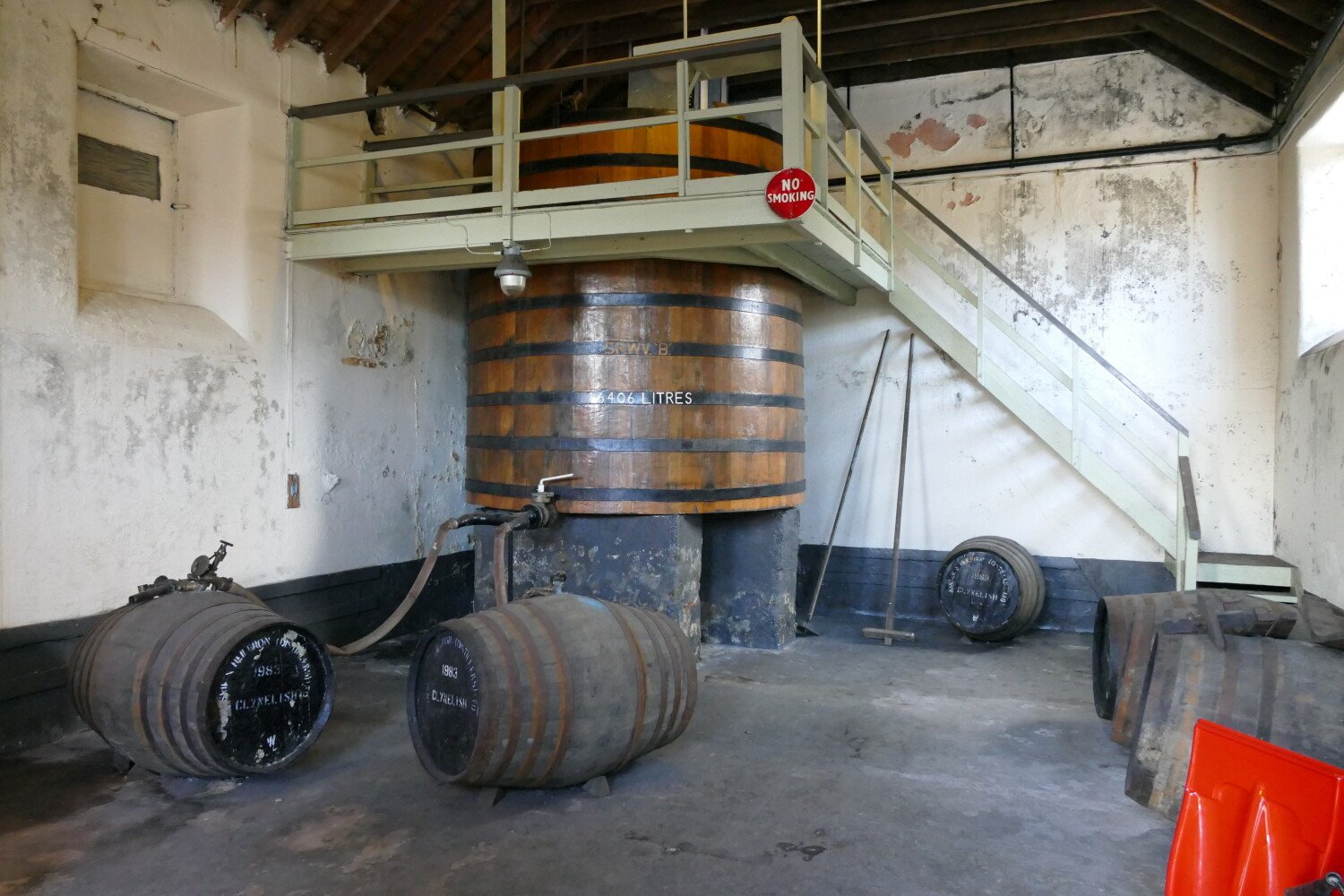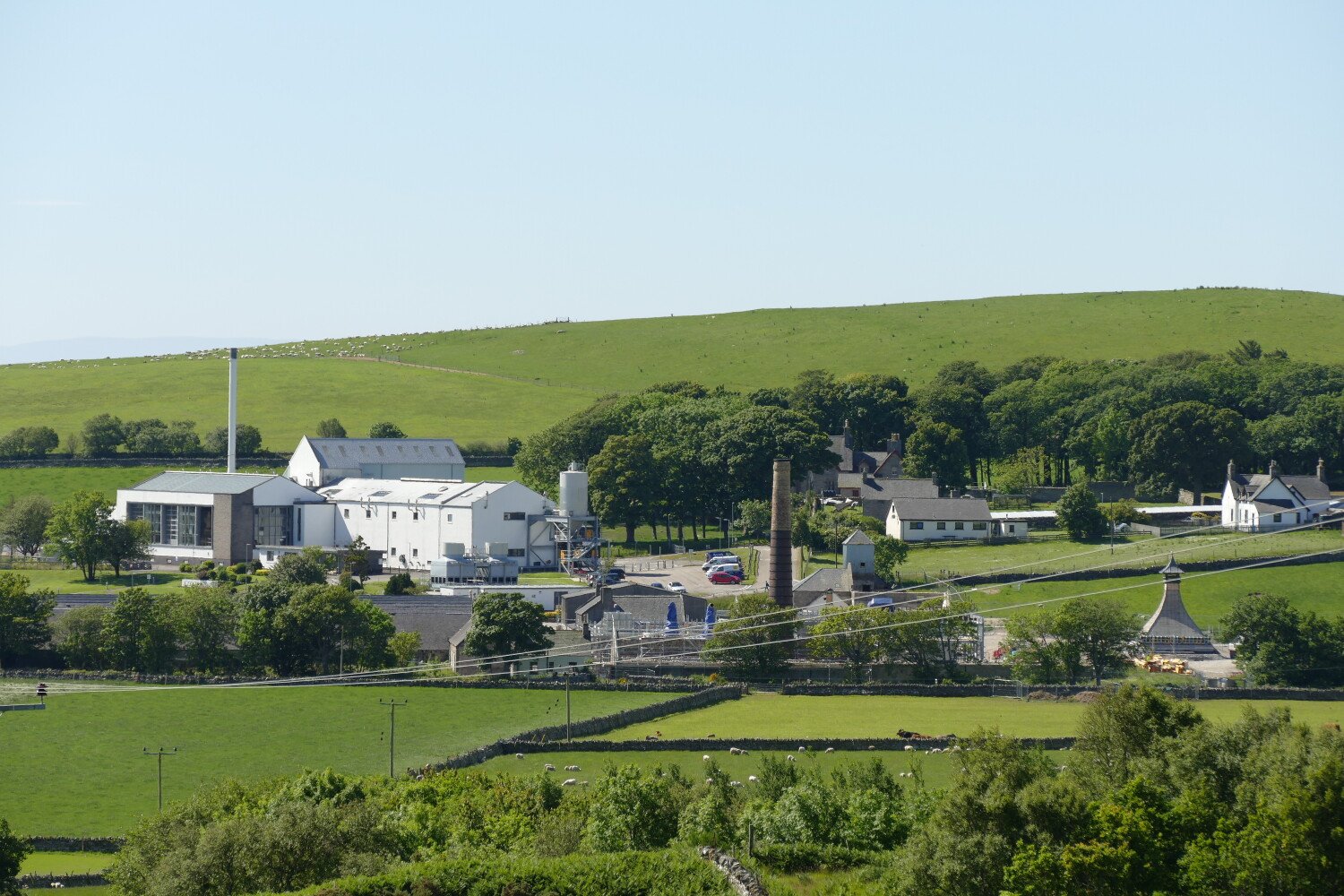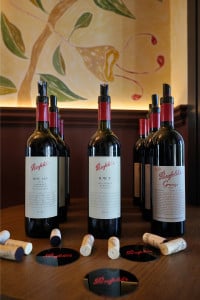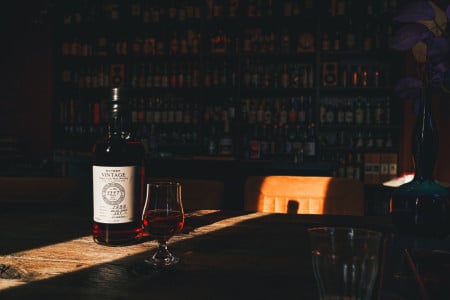Brora, further history ...
Some considerable time later - the third tenant George Lawson was now in charge - Alfred Barnard visited the distillery for his book ‘The Whisky Distilleries of the United Kingdom’. It had been extensively refurbished and rebuilt just before and its production capacity had been increased. There were then three barley storage rooms and two malt floors, one with a soaking vat made of stone and another of iron. The malt drying kiln had been renewed shortly before and in it only peat was used to dry the green malt. Moving parts like malt mill, pumps and cooling fans were now powered by a water mill. The fermentation room contained four fermentation vats, each with a capacity of 13,500 litres. The two pot still type stills had just been installed. Unfortunately, the capacity of the boilers was not mentioned, but it can be safely assumed that they were larger than their predecessors. Over 90,000 litres of alcohol per year were produced during this period.
Leaseholding came to an end in 1896, as the fourth Duke of Sutherland decided to sell the distillery to James Ainslie, a whisky blender from Leith, and John Risk of distillery Banker near Bonnybridge. The new owners had clearly bought ‘Clynelish’ for its good reputation and the high price at which it sold. The distillery was demolished except for one whisky warehouse, and a completely new distillery was built in 1896 and 1897 to produce more. Among other things, a canal and a reservoir were dug to allow running water to flow through it to power a water mill and a dynamo. The water mill drove the moving parts in the distillery and the dynamo generated electricity to light the distillery, allowing longer working hours, especially in winter. In the one warehouse that remained standing, the whisky produced from 1870 to 1896 was aged.


